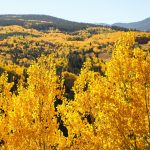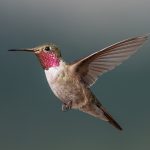What will peak fall colors look like in Colorado this year?
Experts are predicting a slightly earlier than normal peak in the state

Chris Dillman/Vail Daily
Tree health, drought, daylight, rainfall, elevation, heat and wind can all play a role in when fall colors hit their peak.
This year, the Colorado Rocky Mountains are expected to reach full color in mid to late September, according to a new outlook from OpenSnow Meteorologist Alan Smith.
Typically, the most vibrant fall colors are brought on by a wet or non-drought spring, near normal rainfall in mid to late summer, warm, sunny days and cooler nights in the fall, and a lack of extreme weather events — including bursts of heat or cold, heavy precipitation or high wind — in autumn, Smith wrote.
“Wet spring and early summer conditions (from rainfall and snowmelt) are favorable for fall foliage,” Smith wrote. “Whereas drought conditions that persist through the summer months can result in peak color happening earlier than usual, depending on early fall temperatures.”
Drought conditions have worsened across Western Colorado since spring, as below-normal runoff preceded months of abnormally hot and dry weather. Extreme drought conditions persist across much of the West Slope in the latest U.S. Drought Monitor.
These drought conditions led some aspen trees in the High Country to change colors as early as mid-August this year. Some experts report, however, that the healthier forests will still see a typical fall change around a week earlier than normal and with slightly muted colors.
Smith’s fall weather outlook for OpenSnow forecasts near-normal temperatures in the Rockies in early September, with Colorado showing “no clear precipitation signal from September to November, though November does have a slightly warmer-than-normal signal.”
Looking at historic patterns, Smith said the outlook suggests the West could move toward cooler than normal temperatures this fall, with the caveat that confidence in forecasts lowers the further out you look.
Generally speaking, leaves will turn earlier the higher in elevation and the further north you are, Smith said.
While the best color may come around a week early this year, typically in Colorado, the northern mountains along Interstate 70 are the first to peak starting in mid-September. Further south, the San Juan National Forest — which posts weekly reports of the foliage in the area — in recent years has seen peak colors starting near Silverton in mid-September and finishing around early to mid-October in forest areas around Pagosa Springs, Purgatory and Delores.
OpenSnow has a map predicting when fall colors will transition across the United States. The map will be updated twice a week through September, showing the transition based on temperature, moisture, and daylight.
As of Sept. 4, the map shows little to no color across Colorado, with a pocket of “low color” south of Aspen. It predicts that this area will start to see peak colors around Sept. 17.
OpenSnow’s map predicts more fall colors peaking in Rocky Mountain National Park as well as higher-elevation areas around or in Crested Butte, Steamboat Springs, Summit County and Vail around Sept. 24. By Oct. 1, it predicts peak colors in Granby as well as lower elevation areas of Routt, Eagle and Garfield counties. Glenwood Springs, Carbondale, Craig and Meeker are predicted to peak around Oct. 8.
La Voz de Summit, Sept. 4, 2025
Bienvenido a La Voz de Summit, el mejor lugar para encontrar las últimas noticias e información en el condado de Summit. Desarrollado por Summit Daily News.

Support Local Journalism

Support Local Journalism
As a Summit Daily News reader, you make our work possible.
Summit Daily is embarking on a multiyear project to digitize its archives going back to 1989 and make them available to the public in partnership with the Colorado Historic Newspapers Collection. The full project is expected to cost about $165,000. All donations made in 2023 will go directly toward this project.
Every contribution, no matter the size, will make a difference.









